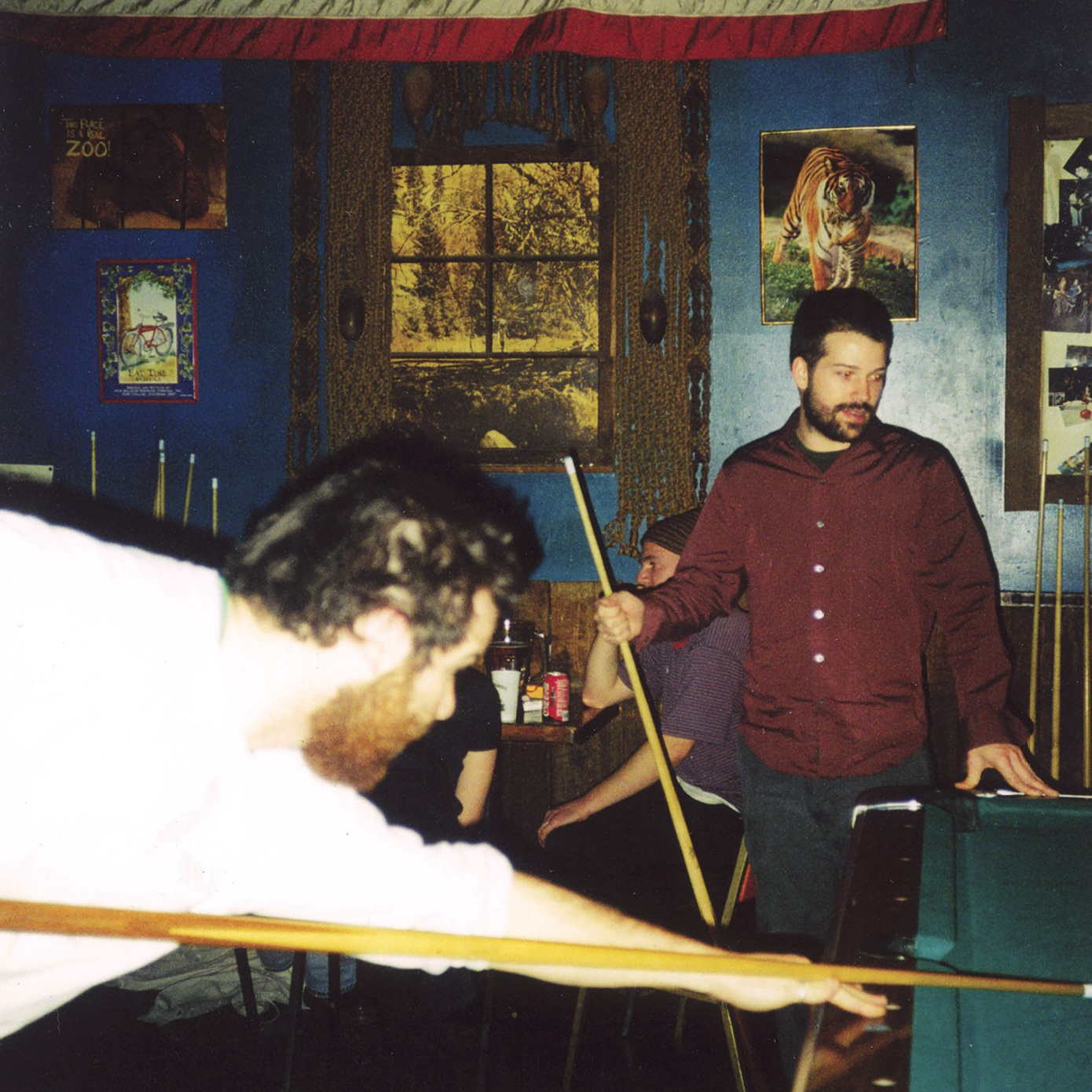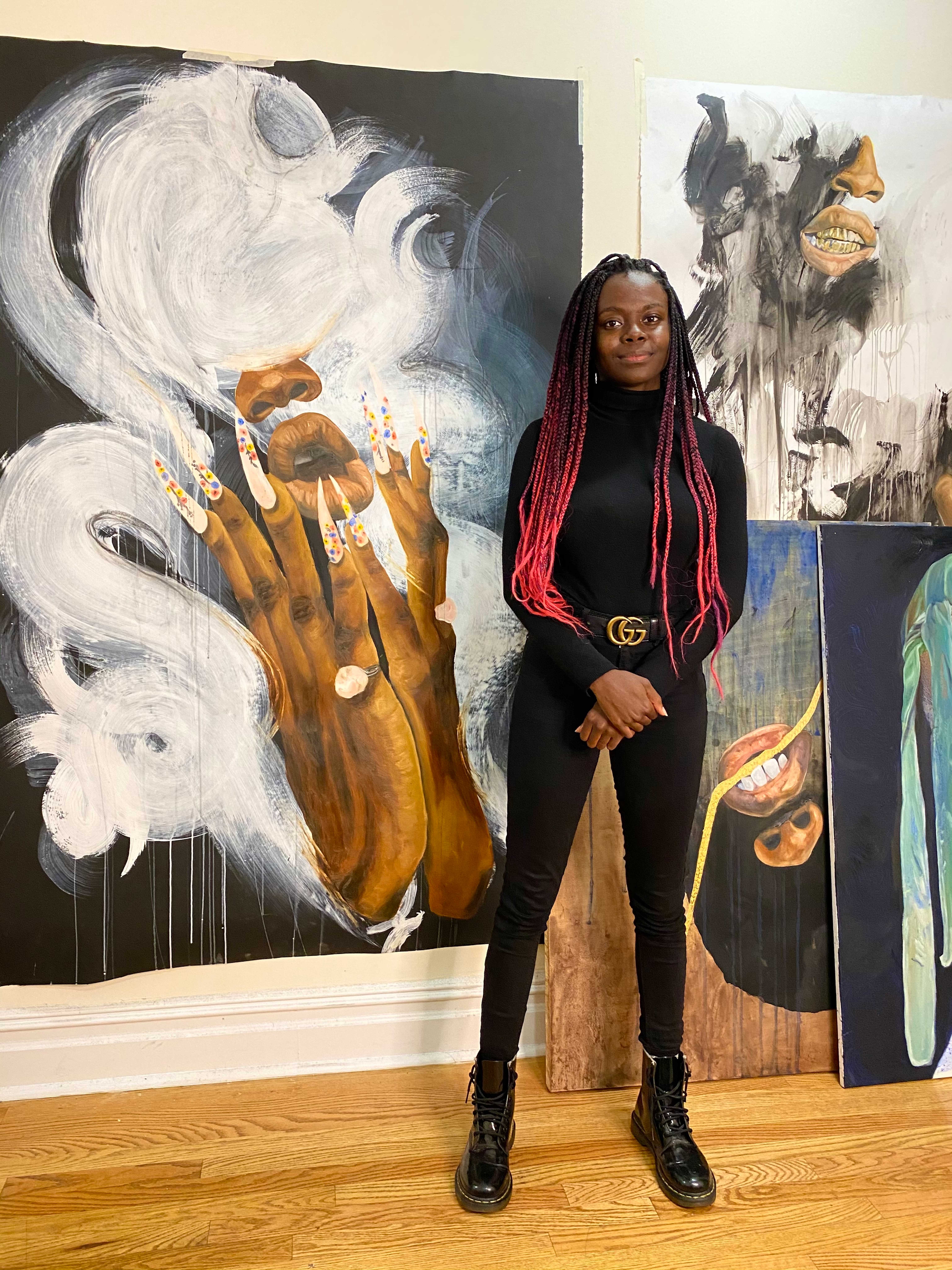
Destinee Sutton-Ross
What’s your strategy for tackling an online fair? How do you ensure you see everything you need to? Luckily there’s a lot less stress not having to run through the fair at the VIP previews. I make a list of whose OVR I want to take a peek at based on the list of artists they have, just in case there’s something new to discover—maybe an artist has produced a new exciting body of work. I find the online fairs to be a lot less work and less stressful, not as fun though, that’s for sure.
Even though my clients ask me to find great contemporary art in general, most of my focus is on Black contemporary art. Each season the workload seems to grow as more galleries are adding Black artists to their offering and the feeding frenzy has made the number of buyers grow as well.
Fair fatigue is real, PDF fatigue is real. How are you coping with that in this uniquely virtual climate? It feels more like “work” now, since all the fun and excitement, the ambiance isn’t there. So you just get it done. At least this year I won’t have my annual flu from all the ACs, and I won’t suffer from fair and event fatigue by Friday, when the Art “Basil” crowd usually arrives!
What artists are you speaking to your clients about these days? How did you discover their work? About 95% of my work is done on Instagram. That’s where I discover artists, by scrolling, or where artists tag me in order for me to have a look at their work. Instagram is where I talk to most of them and that’s also how I share a lot of the info with my clients, especially when it comes to young and emerging artists, most of whom do not have gallery representation yet.
When buying a work at a fair, time is of the essence. How do you purchase art on a deadline and know you are going to love it tomorrow especially having not seen it in-person? When it comes to great work, time is always of the essence! If you have a great eye and excellent taste, there will be others that share that, so there is always pressure. If it feels right you make a move for yourself or for a client, hence it’s key to know your clients as well and to be in sync. It feels good knowing you can buy a work knowing your client is going to be thrilled.
If you’re not sure, it’s best to leave it. Buying at an art fair is not for the novice collector. You have to know what you want. You have to be ready as the best works go right away, that is if you are lucky or connected enough to be offered work in the previews. I usually don't take on any new clients just before a fair—there is no time to get to know each other—unless their requests are super specific.
What should collectors know about the best practices for the times? What should you know before you buy now? Now more than ever homework is key: know what you want and why you want to add a particular artist or work to the collection, because there is no time to waste.
As an advisor, your role is partially of an educator. What elements do you think are essential to cultivating a compelling collection? And whose do you admire, historical or otherwise? Having a finger on the pulse is key. The majority of my clients come to me for that very reason, especially when it comes to art by African or African American artists. I’m part of the culture, which gives me a huge advantage versus many other advisors who only recently started to educate themselves because their clients are requesting it.
As a Black female art advisor, I’ve been pretty much alone in the aisles of the Convention Center for the preview days.
Most great collections have been built over time because of the advisor and/or the collectors personal relationships with the artists. There is a passion and curiosity, an actual engagement and dedication there that goes beyond the mere acquisition. The average art buyer today is not a connoisseur, they are trying to buy in bulk what they hear is hot purely in hopes of making a profit. I don’t work with people like that.
What is your favorite Miami Art Week legend or failure? I’ve had clients drag their feet a bit about acquiring a work. I planned to meet a client who flew in for the VIP preview about a Yinka Shonibare sculpture I had reserved and I could tell he wasn’t exactly as enthusiastic as I was but I knew he would regret not acquiring it. There was now a lot of interest in the work after another sculpture at a fundraising auction the night before had broken a record. I was told by the somewhat stressed gallerist that besides the newfound interest in the work, a well known individual had just stopped by the booth and was ready to buy it. Needless to say, my client arrived about 5 minutes after I relayed that info to him and got the work, albeit somewhat out of breath. While I was at it I got him to add a second Deborah Roberts to the collection as well. It was my first Art Basel Miami all by myself, I was 23 and it was my first major deal and 6-figures at that. Now I had to catch my breath with a glass of wine. lol. My client was thrilled and I no longer doubted that this was going to be my career.
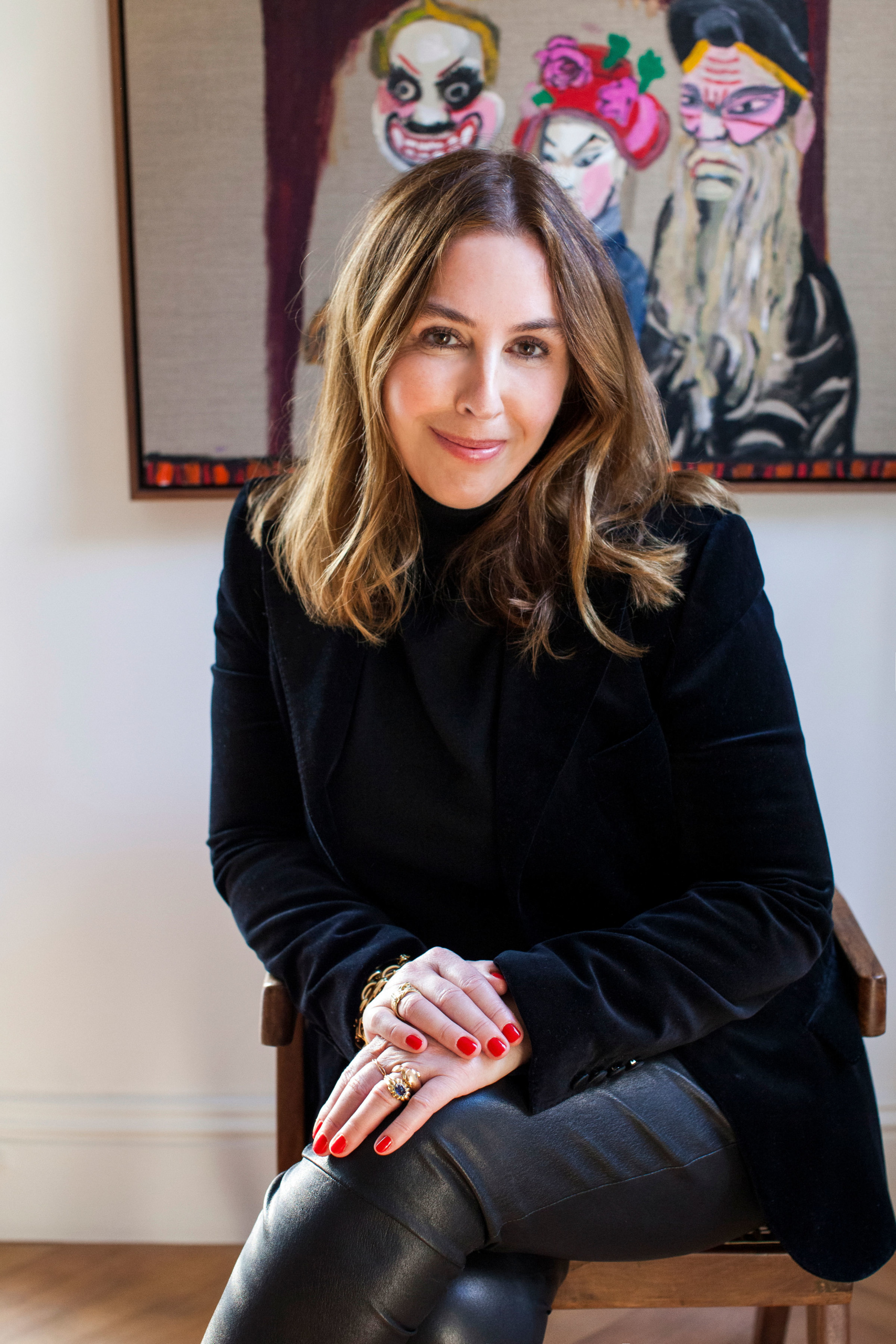
Karyn Lovegrove
What’s your strategy for tackling an online fair? How do you ensure you see everything you need to? Even when it seems that the art world has moved to a predominantly online format, in reality it is still a uniquely relationship-driven experience. Now more than ever, we rely on our relationships with galleries to access the best works for our clients. For each of the major art fairs we are researching and planning 30 to 90 days out, staying in close touch with galleries about what will be featured. It is super important that we have a full understanding of what galleries will be presenting ahead of time so that we can get our collectors' names at the top of reserve lists.
Fair fatigue is real, PDF fatigue is real. How are you coping with that in this uniquely virtual climate? COVID has forced the entire art world to embrace technology. This seismic shift in how we view art has brought into sharp focus the huge chasm between the seemingly endless budgets of auction houses and mega galleries, who can afford to produce their own unique digital experiences, and the more modest and homogenous presentations of mid-size and emerging galleries. In the real world, every gallery has their own unique and nuanced character that is driven by its staff and its artists; without a full blown digital department this is difficult to communicate online. During the pandemic we have never been more grateful for our close relationships with art galleries, dealers, art advisors and artists. Apart from being great friends, we rely on them to introduce us to material that we are actively looking for and to know what our clients are focused on collecting.
What artists are you speaking to your clients about these days? How did you discover their work? Definitely not exclusively, but with ardor we are recommending and pursuing works by Jonas Wood, Cecily Brown, Hilary Pecis, Matthew Wong, Ewa Juszkiewicz, Joan Mitchell, On Kawara, Nicolas Party, Gertrude Abercrombie, Harry Bertoia and Yoshitomo Nara. Our work is our fun as well, and we are also collectors, so we are researching seven days a week. In addition to speaking regularly with galleries, websites like Artsy, ArtNet, Ocula, Daily Art Fair and a slew of highly motivated Instagrammers can satisfy my addiction for new material and wrack up some serious screen time.
What do you miss most about fairs IRL? I literally dream of being at art fairs in glamorous far-flung places. It is so strange not to be getting on a plane this weekend and going to Miami. Endless generic email presentations can never replace the in-person experience of meeting with gallerists and dealers and seeing incredible works of art in the flesh. Nowadays, with online versions, we can finish an art fair in three to four hours; in normal times it can take numerous days to double kiss your way through an art fair. Whilst I imagine the art fair experience of the future will involve less double kissing, I am dying to be in front of art again, especially in Paris or London or New York or Mexico City, etc, etc.
When buying a work at a fair, time is of the essence. How do you purchase art on a deadline and know you are going to love it tomorrow, especially having not seen it in person? Complicated question! As a collector, you need to be well prepared, to know which artists you want to collect and what are the best works by those artists to collect. When making any investment, getting good advice, being educated about the market and doing due diligence are key to being able to pull the trigger at short notice. I find that you can always grow to love an investment that grows exponentially in value, the opposite is not always true.
What should collectors know about the best practices for the times? What should you know before you buy now? When you are purchasing long-distance, request a video of the installed art work to get a feel for the scale and texture of the work—if a picture is worth a thousand words then a video is worth a million. For secondary market purchases, we always ask the gallery to produce a condition report, and we will frequently commission an independent conservator to inspect the work.
As an advisor, your role is partially of an educator. What elements do you think are essential to cultivating a compelling collection? And whose do you admire, historical or otherwise? Take your time, follow your instincts and be true to own tastes and sensibility. Don’t chase the market like most collectors. Enjoy your research, build a library, read extensively, go to museums, talk to gallerists, get an art advisor, join a museum group, but listen with your eyes not your ears, go to artists' studios and meet them and talk to them about their work. Art is the rare investment that you can enjoy living with, and you don’t want to be living with things you are not passionate about.
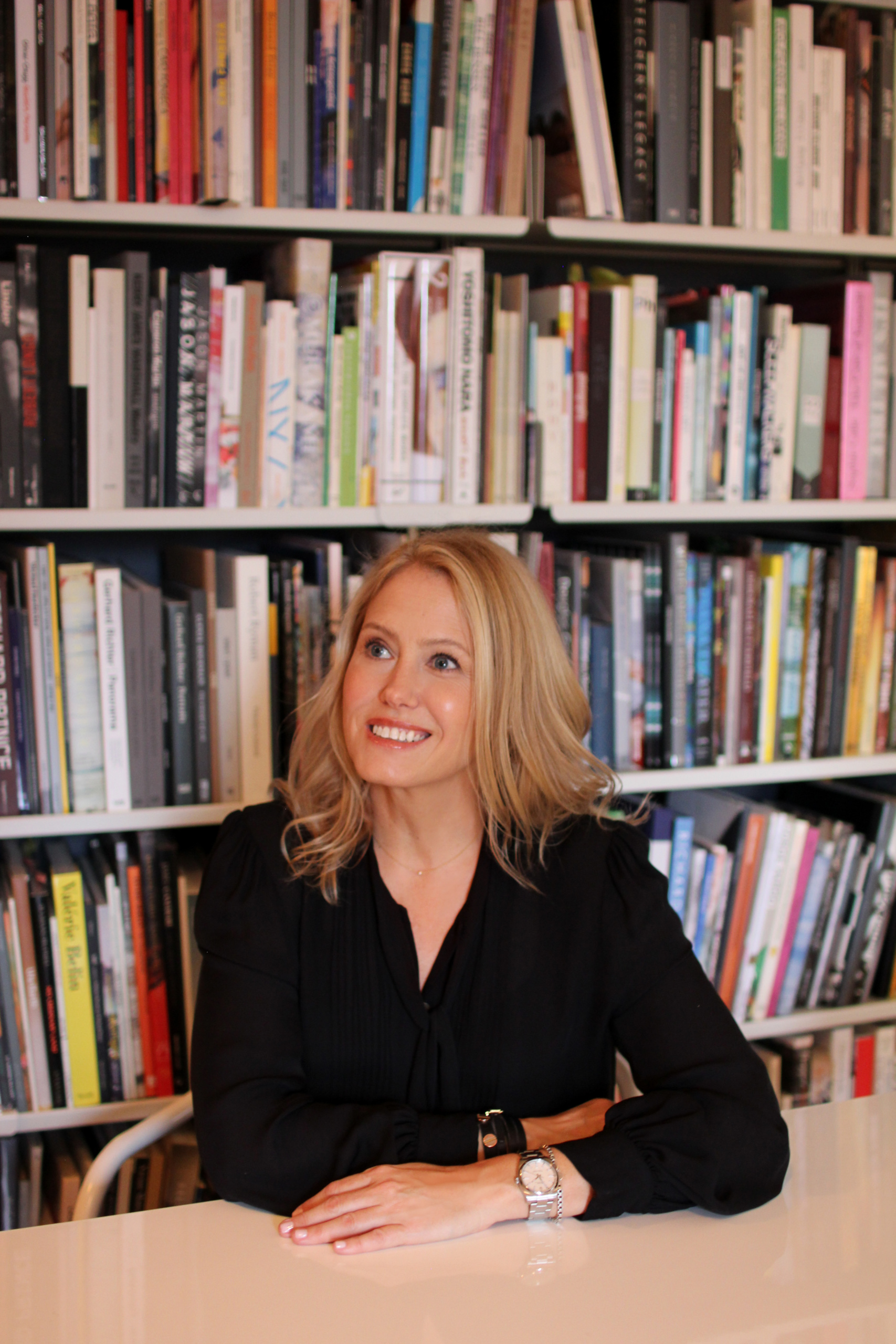
Andrea Hazen
What’s your strategy for tackling an online fair? How do you ensure you see everything you need to? I receive previews from galleries in advance of VIP openings of online fairs, and when the OVRs open I typically head straight to the galleries where I am looking for specific artists and works and determine things to share with my clients. It’s been a lot to take in digitally and it’s tedious and time consuming, but a big part of my service is to distill the info and share the relevant things with collectors to save them time and hassle.
Fair fatigue is real, PDF fatigue is real. How are you coping with that in this uniquely virtual climate? Other than wanting to throw my computer out the window? Just kidding, but I do think everyone is burned out on being glued to their screens and looking at art online. Technology has been a savior in a lot of ways and has proven to be a good fix during this moment thankfully. I think the fairs, galleries and auction houses may not have survived if this pandemic had it hit when I started in the business in the early 90s.
Someone once tried to convince me that in the future all work will be done digitally and suggested there would be no need for services such as advisors. In my opinion, this year has proven the opposite. While people can do a fair amount digitally, in the end people still like to experience and to learn about art in-person, and the overwhelming amount of artists and information makes the need to work with advisors, who can sort through this information jungle, more pertinent and necessary than ever.
What artists are you speaking to your clients about these days? How did you discover their work? Each one of my clients is collecting art that is very personal to them. They’re more like the classic, old-school, thoughtful art collector, buying things that move and interest them personally, growing their collections over many years. There is a broad range of artists worldwide that I have been looking at this year with my clients, from modern and contemporary artists to classic masters, including Patricia Treib, Tony Matelli, Genieve Figgis, Ugo Rondinone, Stanley Whitney, Richard Serra, Lorna Simpson, Ruth Asawa, Donald Judd, Giorgio Morandi and Courbet to name just a few.
I put a lot of effort to keep on top of things by staying in touch with colleagues at galleries and auction houses, reading, visiting galleries and museums and I have also made a lot of great discoveries via online platforms such as Instagram.
What do you miss most about fairs IRL? Nothing replaces experiencing art and speaking with dealers and experts in real life. Art is partially an emotional experience, and so much of the feeling happens when standing in front of a work in person and discussing and learning about an art work from a dealer or expert. I have a client who describes the feeling as “moving the molecules” when he falls in love with something and must have it. This is not something that’s as easy to achieve via jpeg.
When, after months of confinement, museums and galleries reopened and I finally got to experience art in real life, I went to see the Judd show at MoMA, and reading the text at the entry of the exhibit brought tears to my eyes, which to me was proof that we humans need art and culture for our survival and health. Life without art and culture is not living.
As for art fairs, I truly miss the chance discoveries I make while wandering the aisles and seeing my colleagues and discussing things over the course of a fair week. And champagne… we all miss the champagne, right?!
When buying a work at a fair, time is of the essence. How do you purchase art on a deadline and know you are going to love it tomorrow especially having not seen it in person? We preview things in advance of the opening of fairs, so we can typically make decisions quickly before any deadlines. Oftentimes we have been looking at an artist’s work for a period of time, so the buyers are confident in their decision.
What should collectors know about the best practices for the times? What should you know before you buy now? Home has never been more important than it has been in 2020. People have slowed down and have been stuck at home, they have bought new homes, redecorated existing homes and made purchases, such as art, to enhance their interior environments. I’ve been able to help clients navigate things remotely during this difficult year, something I had already been accustomed to for nearly nine years as I divide my time living between New York and Paris.
I have heard from colleagues of some buyers who think there is a “fire sale” on art because of the pandemic, but from my experience this has generally not been the case. Early in the pandemic, I also heard of some instances where galleries were extending deeper discounts on some things but I haven’t found that much changed overall. I think people need to keep in mind that artists and gallerists are businesses and are also trying to survive this moment.
As an advisor, your role is partially of an educator. What elements do you think are essential to cultivating a compelling collection? And whose do you admire, historical or otherwise? I get to know each of my clients and understand their interests and aesthetic tastes when we begin working together. One of my roles as an advisor is to synthesize this information and then, being a matchmaker of sorts, I educate and expose my clients to artists and works I think they will be interested in. A compelling collection is developed by a collector who is emotionally and intellectually engaged with the works in their collection, and where the works are part of a bigger whole that tells their unique story. Collecting art is a journey and there is so much to explore and to learn.
Some collection crushes I have: Abby Rockefeller, Peggy Guggenheim, Herb and Dorothy Vogel and, in Miami, the Rubell and Margolies collections.
What is your favorite Miami Art Week legend or failure? Last year Maurizio Cattelan’s “banana” sculpture exhibited at Galerie Perrotin added so much pleasure to the experience of Art Basel Miami. It was the gift that kept on giving… In fact it’s still giving. I think it’s brilliant that such a simple thing created so much conversation and enjoyment.
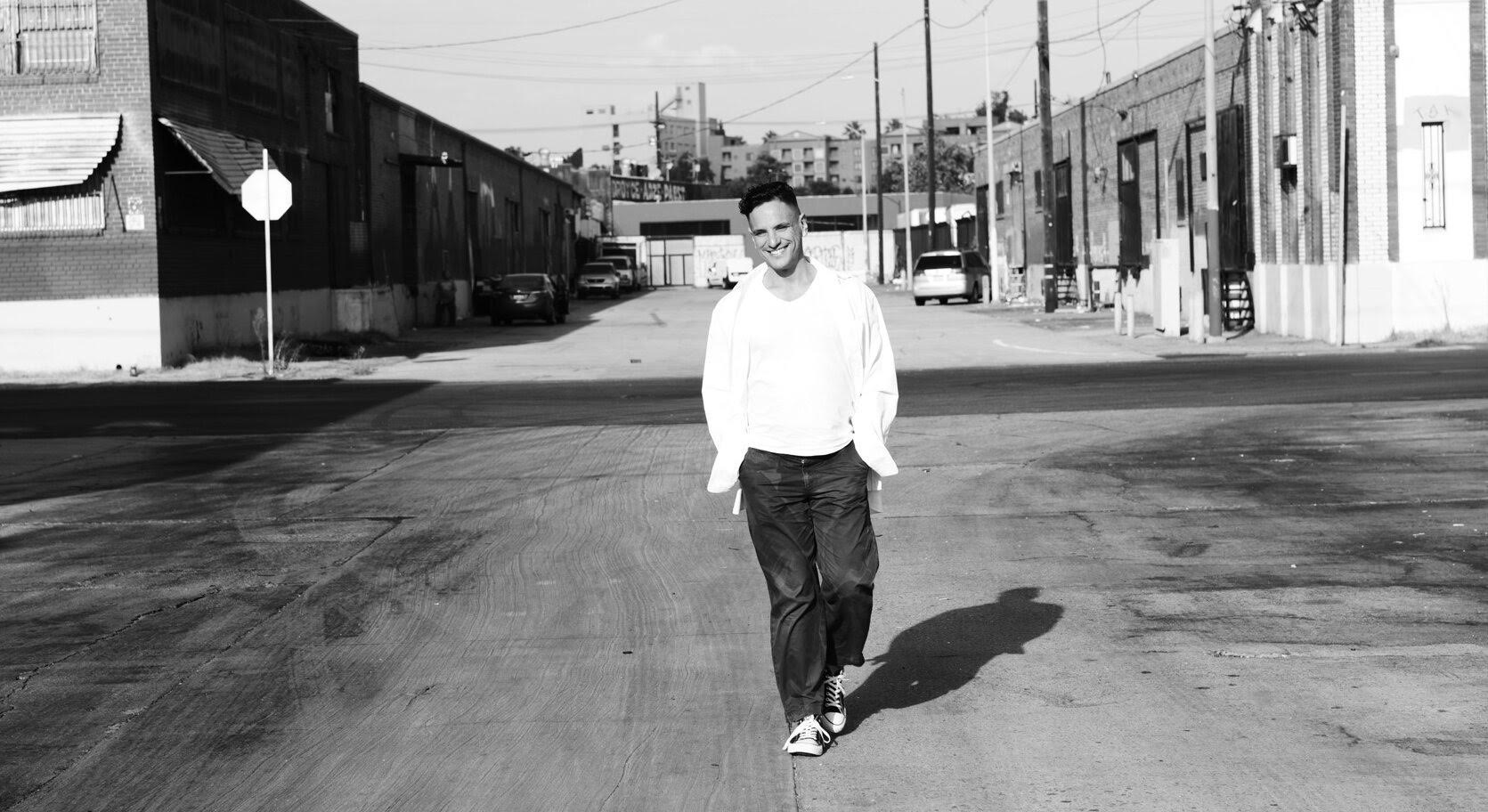
Isaac Joseph
What’s your strategy for tackling an online fair? How do you ensure you see everything you need to? My strategy is not so different now from what it would be IRL. There’s still a lot to see and, more than ever, it’s important to focus. I have been attending Art Basel Miami yearly since 2003. That’s a long time to have seen many things come and go. After so many years of traveling to see art and meet artists firsthand and close looking once there, one naturally accumulates a lot of information and contacts. And also a sensitivity. A curator I respect puts it this way: the eye is a muscle. So it is crucial to not stop training it, and not to stop trying to help others train their eyes (and minds and hearts) by looking at the very best examples of the art that is being made, even when things go virtual. It’s vital to support artists daring to make pathbreaking work, but there are many ways to do so and buying at online fairs can still be one.
What artists are you speaking to your clients about these days? How did you discover their work? I have a long-term approach which might sound odd when one is looking a lot at young and emerging artists. But really it’s not. It allows you not to be drawn to trends or the artists some think happen to be “hot” at any given moment. I’m rather interested in the artists who have the singularity of voice to have true staying power even when they still might not be as visible or known as they should be… And eventually, I’m sure they will be more known or visible. There are a number of such young artists and galleries I have watched grow and remain committed to because of their compelling vision. I’m looking forward to seeing new work by the brilliant Sable Elyse Smith at Carlos Ishikawa and JTT at the fair. I’m also still thinking about all the talent from the last Whitney Biennial, and the powerful impact artists like Garrett Bradley are having, with the release of her film Time on Amazon, pushing past traditional art-world boundaries. Or Janiva Ellis, an artist I have been watching for awhile: I’m looking forward to seeing what she does next year at the ICA Miami. The great Arthur Jafa is another powerful voice. Artists like Lynn Hershman Leeson, Martine Syms, Sondra Perry and Pamela Rosenkranz are always on my to-watch list. So are new faces like Ser Serpas at Karma International or Sung Tieu at Emalin. There was an incredible show that Precious Okoyomon did with Susanne Pfeffer at the MMK Frankfurt earlier this year. I’m also looking at the work of Lydia Ourahmane: I saw her recent shows at Bodega, Chisenhale and the CCA Wattis, which was the last trip I actually took—and I’m very interested to see what she does in her upcoming show at Kunsthalle Basel, one of the places I consistently watch for its impressive programming. Stephanie Comilang is another artist I have been watching for a while. She was in Korakrit Arunanondchai’s Ghost: 2561, and the work is extremely relevant.
What do you miss most about fairs IRL? What I missed most this year was Statements at Art Basel in Basel, especially with so many young galleries I believe in, who had finally made it in. It was always fun to travel—to London, Paris, Hong Kong, Mexico City or wherever for fairs and exhibitions. Having the opportunity to experience different cultures as a way to understand the context from which artists were making their work was invaluable. Like a lot of things, art is an in-person business; there is no substitute for real life experiences and personal connections.
When buying a work at a fair, time is of the essence. How do you purchase art on a deadline and know you are going to love it tomorrow, especially having not seen it in-person? It depends on the situation. Sometimes there is one particular work you discover in a PDF or viewing room and know you want to keep an eye on it. But for the most part, the works you see are ones in which the communication with the gallery or artist has already begun long before the fair, and continues after. It is an ongoing conversation. This too requires a long term approach. If you’re interested in an artist, you should feel that way long after the fair is past. It can take time to learn more about an artist’s practice, to read interviews with them, to listen to them speak publicly, to seek out articles written about them, to hopefully meet them and even do a studio visit. Cultivating relationships with visionary curators and gallerists is important too: one learns from their practices and learns about why they are committed to certain artists. So my job, which is as much a passion as anything else, is to be doing all of that simultaneously and to synthesize and share it with others. This wider context for understanding an artistic practice is everything. It’s also particularly necessary with the cycle of fairs and international exhibitions now infinitely delayed. Love at first sight can and should happen, even virtually, but I still believe all acquisitions should be informed decisions.
What should you know about the best practices for the times? What should you know before you buy now? Develop personal relationships whenever possible. Watch what artists are doing in the world and contribute if you can. It’s sort of the beauty of the experience. Simon Denny is someone I have been watching for years now. Earlier this year we rode bikes together in San Francisco when I went to the opening of the Uncanny Valley show. Like most artists I follow, he has important things to say about our society. Learning about these things also helps us grasp how artists can and are shaping our understanding of the world. For collectors who are not already doing that work on their own, I see my role as trying to help make bridges between those artists and the collectors who are audacious enough to care about those things as part of their thinking and buying. You hear a lot of older collectors talk about how they are “custodians.” This is also a beautiful model to learn from, because being a custodian means taking the time to learn about what you are the custodian of.
What is your favorite Miami Art Week legend? Oh, there are so many! Most recently, I took a client to last year’s Art Basel Miami Gavin Brown dinner at Dara Friedman and Mark Handforth’s incredible Coconut Grove property. There was an intimate mix of artists, curators and staff. Everyone made room in the garden. It was family style, and as usual Mina Stone cooked. It was so very cozy around the fire pit under the stars. Another magical evening courtesy of Gavin Brown. Who knew it would mark the end of an era.
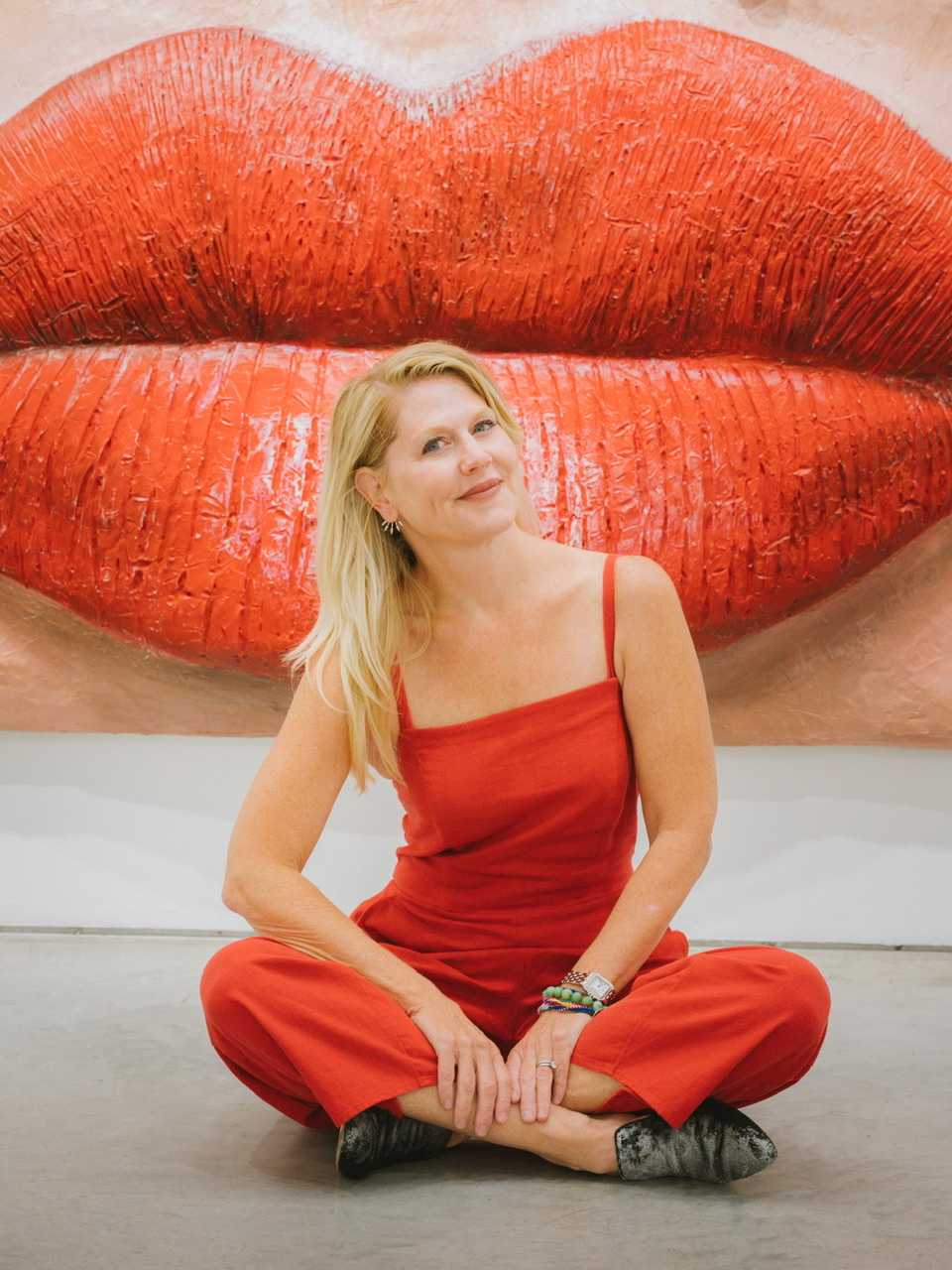
Jeanne Masel
What’s your strategy for tackling an online fair? How do you ensure you see everything you need to? It’s definitely less about seeing everything and more about having a very specific strategy. We have individualized strategies for each of our clients so we know what will fit their needs, and occasionally our clients have very specific pieces we are keeping an eye out for. We start with the galleries we know and trust and then tend to look farther afield.
Fair fatigue is real, PDF fatigue is real. How are you coping with that in this uniquely virtual climate? Again, we work very closely with our clients to be as specific as possible about the kinds of works they wish to include in their collection. So, at all times we have in mind what each of our clients are looking for, and pieces tend to jump out when we see them.
What artists are you speaking to your clients about these days? How did you discover their work? We are speaking to our clients about artists we’ve partnered with to commission limited-edition prints at ART FOR CHANGE. We discover many of these artists’ work through galleries and emerging art fairs. I first learned of Susumu Kamijo, for instance, through Harper’s gallery. I’ve been friends with Harper for years and he’s introduced me to many great artists through group shows at his gallery in East Hampton. I approached Susumu about doing a print for our recent print initiative in partnership with When We All Vote, and were thrilled to produce a print of his work alongside prints by Marcus Brutus, Emma Kholmann, Brian Calvin and Rico Gaston. Shortly after launching the Susumu Kamijo print, we placed an original painting by him with an ART FOR CHANGE collector who had fallen in love with Susumu’s work after buying the edition from us.
We’ve found that ART FOR CHANGE has functioned as a way for our collectors to become engaged in both philanthropy and collecting. As we introduce collectors to artists through the prints commissioned through ART FOR CHANGE, they often decide that they would like to invest in an original work by that artist. This happened with artist Danielle Orchard. I originally saw her work at an art fair for emerging artists four years ago. I’ve been following her career and work for years, and decided to approach her to commission a print for our City Harvest partnership. We have since placed an original painting by her with an ART FOR CHANGE collector, too.
When buying a work at a fair, time is of the essence. How do you purchase art on a deadline and know you are going to love it tomorrow especially having not seen it in-person? Since we know what our clients are looking for, we’ve typically seen other works by that particular artist in the past. It’s always a good idea to ask for additional high-res digital images to get a close-up, surface level look, as well as an image of the work in a room setting so that you can see the scale.
What should collectors know about the best practices for the times? What should you know before you buy now? I think regardless of the times, the most important thing is to buy a piece of art because you LOVE it first and foremost. And secondly, work with a consultant who has relationships with galleries and dealers they know and trust. This also allows collectors to stick to their strategy and not get caught up in impulse buys.
As an advisor, your role is partially that of an educator. What elements do you think are essential to cultivating a compelling collection? And whose do you admire, historical or otherwise? I find that the most compelling collections are those that are built out of passion and careful consideration. I can always tell when a collection consists only of what has inspired and excited the collector as opposed to being driven by trends. Those are the collections that are easy to share with friends and family; it’s second nature to share them with anyone who enters your home, since you’re genuinely in love with the works. I also encourage clients to think about legacy for their family, not just in terms of value, but in terms of the memories, significant milestones, and spirit that has gone into a lifetime of dedicating time and passion to artists and their work.
What is your favorite Miami Art Week legend or failure? I got to meet Allison Zukerman, an artist I love and have been following for years! She was at the Kravets Wehby booth at Untitled on opening night. I had recently purchased a painting of hers, Weekend Recliner. She told my colleague Emilia and I that she felt that piece represented a breakthrough in her painting! I was in Allison’s studio a few weeks ago with the same colleague reminiscing about how just a few years prior we had met Allison together in Miami, and now we are doing this incredible project to benefit City Harvest with her!
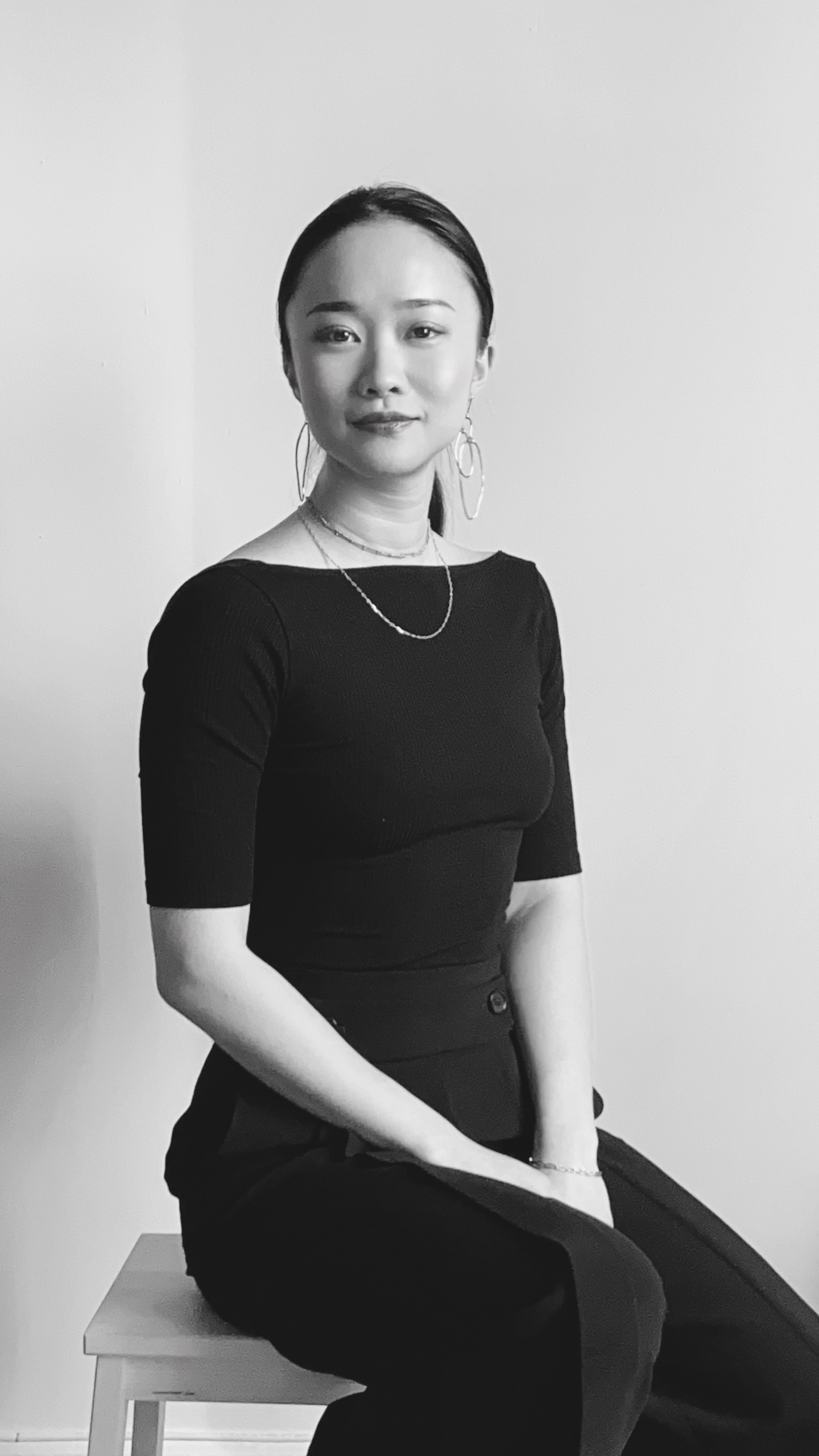
Yitong Wang
What’s your strategy for tackling an online fair? How do you ensure you see everything you need to? My team in New York and Beijing sit down together for hours on a conference call and carefully look through all the fair previews we receive for each online fair. We then make a highlight PDF with artworks ranging from young emerging to mid-career to blue chip and secondary market postwar which we think are worthy of considering for our clients, taking into account the taste and experience of each of us on the team, as well as bearing in mind the specific collections and interests of our individual clients.
What artists are you speaking to your clients about these days? How did you discover their work? We are constantly researching and making discoveries in the rich world of artworks from the unique perspective of each client and their collection. We believe in furthering the path of and complimenting each individual collection, rather than being fixated on pushing for ‘must haves.’ One moment we are talking about Issy Wood, Vaughn Spann, Tanya Merrill and Marcus Jahmal, and the next moment we are talking about Simone Leigh, Haegue Yang, Yayoi Kusama and Isa Genzken, and the list continues.
Especially with those clients that are new to collecting, we take them on a journey to find where their hearts lie, to tell them about what they don’t already know and to learn new content together—and we see development in taste profiles and in focuses as these journeys unfold. This process also continually renews the eyes with which we ourselves look at art, it’s really quite inspiring and fascinating, which in turn makes advising a continually educating experience for us.
When buying a work at a fair, time is of the essence. How do you purchase art on a deadline and know you are going to love it tomorrow? Especially having not seen it in-person? Our ongoing conversations with our clients give us knowledge regarding which artists to bear in mind in terms of acquisition, and we are on the look-out with gallery exhibitions and art fairs, as well as with all other opportunities. However, there are many elements at play when attempting to make an acquisition, and we believe in both competition and in chance and patience. We try to practice the ‘I want it and I want it now’ mentality with moderation and clarity.
Are there deals right now to be had like in New York real estate? How are you navigating these offers in real time? I think there was at one point, namely during and right after the lockdown period, when we saw an expectation for special deals with buyers. This expectation was met with a reality where indeed, especially in the secondary market, we found, on occasion, artworks that otherwise would not have been on offer. If a buyer was ready to pay regular fair market price, they would be able to welcome these A+ works into their own collections, which I think is a tremendous deal in and of itself.
Fair fatigue is real. How are you coping with that in this uniquely virtual climate? Knowing that the virtual climate is temporary, just like other limitations such as travel bans, we continue to work from home on our phones and computers with hope if not keen anticipation. During this strange phase, we have seen clients’ attention span and enthusiasm wax and wane, but this is to be expected—just as some days we wake up and feel energized, and some other days we think, ‘ugh this is dreadful when will it end!’—and doesn’t discourage us from sustaining a vibrant level of energy toward work, and toward life in general.
As an advisor, your role is partially of an educator. What elements do you think are essential to cultivating a compelling collection? And whose do you admire? I think that the most essential element to a compelling collection is the heart. As much as there could be an entire manual of key factors to consider and evaluate when making an acquisition, a collection devoid of the collector’s unique personality and passion feels rather like a counter-collection to me. I believe the act of collecting is first and foremost an act of bringing into one’s possession objects of fascination and obsession, that one then revisits, admires and shares with others again and again with joy and curiosity, through which one finds renewed appreciation.
I am always here to inform my clients and to contextualize artworks and artists in real-time, in the ever-evolving art world and art market, while in the end, I always ask my client, ‘Do you feel connected with this work, do you love it?’ If you truly love this work, and of course if it’s reasonable to your budget, forget the ‘manual’ and let’s get it. I have clients who, having acquired works with me in this logic several years ago, have continued to send me little notes with their thoughts and feelings upon viewing the work at home on a given day—the works continue to make them happy. This, for me, is the sign of a rewarding collection, both to the collector and to the advisor who helped cultivate it.
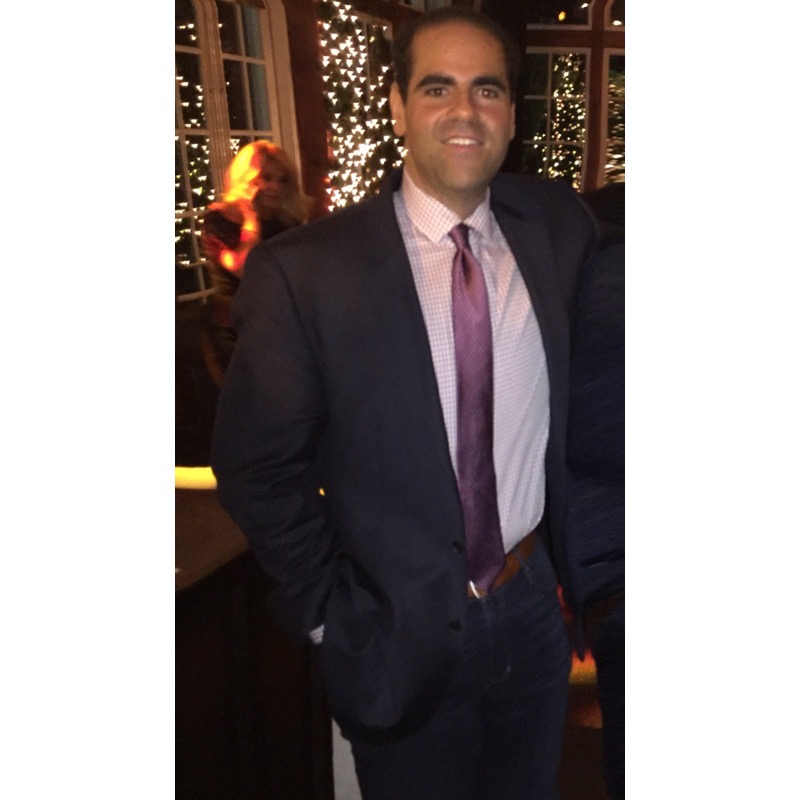
Ralph DeLuca
What’s your strategy for tackling an online fair? How do you ensure you see everything you need to? I’m old school. I strategically look at all the galleries participating in the art fair and reach out directly to the ones I have relationships with to get previews and discuss interests, whether it be for me or my clients.
Fair fatigue is real, PDF fatigue is real. How are you coping with that in this uniquely virtual climate? Art fairs are essential. The pandemic has had untold consequences that we are yet to see. While it has been easier to work from home and take breaks away from the screen, or watch an auction while on a road trip, the opportunity-cost doesn’t hold up. The value being lost with not having fairs needs to be recognized and we need leaders in the art world and other spaces to develop strategies to get back on track. The trickle-down effects of not having the social aspect of art will have negative ramifications for buying art. Face-to-face interactions are important for building relationships, especially when working with galleries in other cities and countries. I spend more time individually with clients reviewing artists and their work, and reviewing auctions, and fair previews.
What artists are you speaking to your clients about these days? How did you discover their work? George Condo, Sanford Biggers, Jonathan Lydon Chase, Sarah Lucas, Robert Crumb to name a few favorites. Art fairs and auction houses are hotspots for discovering talented, diverse and emerging artists.
When buying a work at a fair, time is of the essence. How do you purchase art on a deadline and know you are going to love it tomorrow, especially having not seen it in person? I tend to make sure my clients understand and have a sense of urgency when buying from a PDF or an art fair. It’s a rat race against other collectors, museums and their trustees and advisors showing the work to clients. Minimally, I ensure my clients see enough of the artist’s work in person before they commit to buy a piece sight unseen. This way they gain an understanding of the artist’s technique and what the painting should look like.
What should collectors know about the best practices for the times? What should you know before you buy now? I think collectors need to understand that the demand for “hot” artists, particularly in the primary market, is as competitive as ever. Now you don’t have the luxury of showing up at a gallery opening or art fair to shake the dealer’s hand, grab a drink and network to achieve that relationship-building and success. COVID-19 and dealing online has leveled the playing field in a way.
As an advisor, your role is partially that of an educator. What elements do you think are essential to cultivating a compelling collection? And whose do you admire, historical or otherwise? Education is one of my main priorities when working with clients and others. Learning about people’s interests and goals is critical to building their collections, but so is educating them so that they are informed. Informed collectors are going to build much stronger collections and be happier with their decisions. They should be informed not only on the artists they are drawn to, whether established or emerging, but also on galleries and programs. You will not build a great collection without passion and vision.
There are many collectors I admire but when I think of passion and vision, the first collecting power couple that come to mind are Don and Mera Rubell. They built a world-class collection and they are open to discussing what they like, what they are buying and why—it’s refreshing and serves as a model for others.
Treating your collection like nuclear codes and being covert doesn’t help build new collectors, expand the art world or create an environment that produces value and equity.
What is your favorite Miami Art Week legend or failure? 2020 has been hard for so many, both personally and professionally. I think 2020 Art Basel is a tremendous loss, as friends, collectors and colleagues are not able to gather, share and create value for all.



